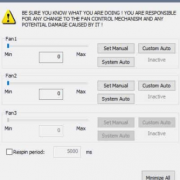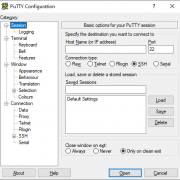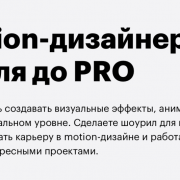Зачем хакерам по для взлома (malware) и как от него защититься?
Содержание:
- How do I protect myself from spyware?
- What is the history of malware?
- The future of antiviruses and security programs
- Описание антивирусной утилиты Anti-Malware
- Возможности Malwarebytes Anti-Malware
- Настройки Malwarebytes Anti-Malware
- Проверка системы в Malwarebytes Anti-Malware
- Current status of computer viruses and antivirus programs
- How to protect against malware
- Types of spyware
- Объекты воздействия
- How do I get spyware?
- Шаг четвертый: Сброс браузеров
- How do I protect myself from adware?
How do I protect myself from spyware?
The best defense against spyware, as with most malware, starts with your behavior. Follow these basics of good cyber self-defense.
- Don’t open emails from unknown senders.
- Don’t download files unless they come from a trusted source.
- Mouse-over links before clicking on them and make sure you’re being sent to the right webpage.
- Use a reputable cybersecurity program to counter advanced spyware. In particular, look for cybersecurity that includes real-time protection.
A quick note about real-time protection. Real-time protection automatically blocks spyware and other threats before they can activate on your computer. Some traditional cybersecurity or antivirus products rely heavily on signature-based technology—these products can be easily circumvented by today’s modern threats.
You should also look out for features that block the delivery of spyware itself on your machine, such as anti-exploit technology and malicious website protection, which blocks websites that host spyware. The premium version of Malwarebytes has a solid reputation for spyware protection.
Digital life comes with ubiquitous dangers in the daily online landscape. Fortunately, there are straightforward and effective ways to protect yourself. Between a cybersecurity suite and commonsense precautions, you should be able to keep every machine you use free from spyware invasions and their malicious intent.
See all our reporting on spyware at Malwarebytes Labs.
What is the history of malware?
Given the variety of malware types and the massive number of variants released into the wild daily, a full history of malware would comprise a list too long to include here. That said, a look at malware trends in recent decades is more manageable. Here are the main trends in malware development.
The 1980s and onward: The theoretical underpinning of “self-reproducing automata” (i.e., viruses) dates back to a lecture delivered in 1949 by 20th century Renaissance man John von Neumann. However, the history of modern viruses begins with a program called Elk Cloner, which started infecting Apple II systems in 1982. Disseminated by infected floppy disks, the virus itself was harmless, but it spread to all disks attached to a system, exploding so virulently that it can be considered the first large-scale computer virus outbreak in history. Note that this was prior to any Windows PC malware. Since then, viruses and worms have become widespread.
The 1990s: Microsoft Windows began its long run as the most popular OS in the world (not to be overtaken till Google’s Android many years later). As the Windows OS and its built-in applications grew in popularity, so too did the number of viruses written for the platform. In particular, malware authors started to write infectious code in the macro language of Microsoft Word. These macro viruses infected documents and templates rather than executable applications, although strictly speaking, the Word document macros are a form of executable code.
2002 to 2007: Instant messaging (IM) worms spread across popular IM networks, including AOL AIM, MSN Messenger, and Yahoo Messenger. Most attacks started with a social engineering ploy. Attackers might send out an IM that reads something like “Who’s with you in this picture?” or “OMG, I think you won the lottery!” along with a link to a malicious download. Once your system was infected, the IM worm would further propagate itself by sending malicious download links to everyone on your contact list.
2005 to 2009: Adware attacks proliferated, presenting unwanted advertisements to computer screens, sometimes in the form of a pop-up or in a window that users could not close. These ads often exploited legitimate software as a means to spread, but around 2008, software publishers began suing adware companies for fraud. The result was millions of dollars in fines. This eventually drove adware companies to shut down. Today’s tech support scams owe much to the adware of yesteryear, employing many of the same tricks as the old adware attacks; e.g., full screen ads that can’t be closed or exited.
2007 to 2009: Malware scammers turned to social networks such as Myspace as a channel for delivering rogue advertisements, links to phishing pages, and malicious applications. After Myspace declined in popularity, Facebook and Twitter became the preferred platforms.
2013: A new form of malware called ransomware launched an attack under the name CryptoLocker, which continued from early September 2013 to late May 2014, targeting computers running Windows. CryptoLocker succeeded in forcing victims to pay about $3 million in total, BBC News reported. Moreover, the ransomware’s success gave rise to an unending series of copycats.
2013 to 2017: Delivered through Trojans, exploits, and malvertising, ransomware became the king of malware, culminating in huge outbreaks in 2017 that affected businesses of all kinds.
2017: Cryptocurrency—and how to mine for it—has captured widespread attention, leading to a new malware scam called cryptojacking, or the act of secretly using someone else’s device to surreptitiously mine for cryptocurrency with the victims’ resources.
2018 to 2019: Ransomware made its big comeback. This time, however, cybercriminals shifted their focus from individual consumers to business targets. Riding a wave of GandCrab and Ryuk ransomware infections, attacks on businesses went up 365 percent from 2018 to 2019. As of this writing, there’s no indication the ransomware attacks will slow down.
The future of antiviruses and security programs
Artificial intelligence (AI) and machine learning (ML) are the latest stars in the top antivirus and anti-malware technology.
AI allows machines to perform tasks for which they are not specifically pre-programmed. AI does not blindly execute a limited set of commands. Rather, AI uses “intelligence” to analyze a situation, and take action for a given goal such as identifying signs of ransomware activity. ML is programming that’s capable of recognizing patterns in new data, then classifying the data in ways that teach the machine how to learn.
Put another way, AI focuses on building smart machines, while ML uses algorithms that allow the machines to learn from experience. Both these technologies are a perfect fit for cybersecurity, especially since the number and variety of threats coming in every day are too overwhelming for signature-based methods or other manual measures. Both AI and ML are still in developmental phases, but they hold immense promise.
In fact, at Malwarebytes, we already use a machine-learning component that detects malware that’s never been seen before in the wild, also known as zero-days or zero-hours. Other components of our software perform behavior-based, heuristic detections—meaning they may not recognize a particular code as malicious, but they have determined that a file or website is acting in a way that it shouldn’t. This tech is based on AI/ML and is available to our users both with top antivirus protection and an on-demand scanner.
In the case of business IT professionals with multiple endpoints to secure, the heuristic approach is especially important. We never know the next big malware threat, so heuristics play an important role in Malwarebytes Endpoint Protection, as does AI and ML. Together, they create multiple layers of antivirus protection that address all stages of the attack chain for both known and unknown threats.
Описание антивирусной утилиты Anti-Malware
Anti-Malware имеет приятный светлый интерфейс с темным меню. Собственно само меню состоит из четырех пунктов. Панель мониторинга, Сканирование, Параметры и История. В первой вкладке отображается системная информация программы. Сюда входит лицензия, актуальность вирусных баз, процесс сканирования и параметры защиты. Сканирование компьютера можно запустить не только со вкладки «Сканирование», но и с любой другой. С единственным отличием, что во вкладке «Сканирование» вам будет доступна более полная информация о анализе и проверке системы. Это и количество проверенных объектов, и этап сканирования, и оставшееся время.
С вкладки «Параметры» производится полная настройка утилиты Anti-Malware. Здесь вы сможете добавить файлы в исключения, чтобы антивирус не проверял их вовсе, настроить параметры сканирования и параметры обновления, а также автоматический запуск сканирования системы. Последняя функция очень важна, ведь дело в том, что сканирование производится довольно длительное время, а с помощью планировщика вы сможете запустить сканирование и лечение вредоносных программ в заданное время, например, ночью. Таким образом, вы экономите свое время и поддерживаете свой компьютер в рабочем состоянии.
Возможности Malwarebytes Anti-Malware
В первую очередь программа Malwarebytes Anti-Malware предназначена для очистки компьютера от вредоносного ПО. Это могут быть вирусы, шпионские программы, трояны или черви. Антималваре вначале производит поиск вредоносного ПО, а затем происходит его анализ. Во время анализа программа решает, как поступить с зараженными файлами и программами. Если возможно, то производится их лечение, в противном случае – они помещаются на карантин. А это означает, что подобного рода файлы скрываются и их работоспособность блокируется антивирусной программой.
Также, важно отметить и тот факт, что с помощью Malwarebytes Anti-Malware можно избавиться от довнлоадеров и бэкдоров, которые показывают рекламу в браузерах вызванную установкой Adware, троянов и различных дополнений. Как часто заходя на тот или иной сайт, вам надоедает одна и та же всплывающая реклама? Или ваш любимый браузер открывается с рекламой
Чтобы избежать этого, вы можете скачать программу Malwarebytes Anti-Malware. Она отлично ищет руткиты избавившись от которых вы увидите нормальное отображение сайта без левой рекламы. Это важно, так как бывают такие сайты, на которых есть реально полезный контент, но на фоне многочисленных рекламных баннеров он просто теряется и стает трудным к восприятию. Anti-Malware удаляет ее и возвращает сайтам их первоначальный вид. Данная утилита не блокирует все виды баннерной рекламы. Под эту категорию подпадают и flash-баннеры. Для блокировки всей рекламы используйте дополнения к браузерам такие как Adblock plus и uBlock. Но вы должны понимать и тот факт, что заблокировать всю рекламу невозможно. Ведь разработчики баннеров всячески пытаются обойти различные блокировки и придумывают все новые способы это сделать. Данную прогрмму стоит постоянно обновлять, чтобы держать в актуальном состоянии ее антивирусную базу
Как часто заходя на тот или иной сайт, вам надоедает одна и та же всплывающая реклама? Или ваш любимый браузер открывается с рекламой. Чтобы избежать этого, вы можете скачать программу Malwarebytes Anti-Malware. Она отлично ищет руткиты избавившись от которых вы увидите нормальное отображение сайта без левой рекламы
Это важно, так как бывают такие сайты, на которых есть реально полезный контент, но на фоне многочисленных рекламных баннеров он просто теряется и стает трудным к восприятию. Anti-Malware удаляет ее и возвращает сайтам их первоначальный вид
Данная утилита не блокирует все виды баннерной рекламы. Под эту категорию подпадают и flash-баннеры. Для блокировки всей рекламы используйте дополнения к браузерам такие как Adblock plus и uBlock. Но вы должны понимать и тот факт, что заблокировать всю рекламу невозможно. Ведь разработчики баннеров всячески пытаются обойти различные блокировки и придумывают все новые способы это сделать. Данную прогрмму стоит постоянно обновлять, чтобы держать в актуальном состоянии ее антивирусную базу.
Настройки Malwarebytes Anti-Malware
Для выбора настроек антивируса, необходимо будет перейти во вкладку «Настройки». Во вкладке «Настройки», в левой колонке расположены несколько разделов, с помощью которых вы можете самостоятельно настроить антивирус, если вас не устраивают настройки по умолчанию.
Следует учитывать то, что антивирус Malwarebytes Anti-Malware уже оптимально настроен по умолчанию.
В разделе «Исключения» вы можете настроить параметры, для исключения конкретных папок или файлов, при обнаружении вредоносных программ. Malwarebytes Anti-Malware не будет проверять данные папки и файлы, добавленные в исключения, во время сканирования вашего компьютера на вирусы. В исключения будут добавлено все содержимое данной папки (подпапки, файлы и прочее).
С помощью кнопок «Добавить файл» и «Добавить папку» можно будет добавить необходимые данные в исключения, а с помощью кнопки «Удалить», вы можете удалить данную папку или файл из исключений.
В разделе «Веб исключения», можно будет добавить IP адреса, домены, или программы для исключения при проверке Malwarebytes Anti-Malware. При помощи кнопок «Добавить IP», «Добавить домен», «Добавить процесс» можно будет добавить конкретные данные в веб исключения, а при помощи кнопки «Удалить», удалить эти данные из веб исключений.
Данная опция доступна только для платной версии программы.
В разделе «Обнаружения и защита» настраивается настройка обнаружения и поведение защиты Malwarebytes Anti-Malware. По умолчанию, эти настройки уже оптимально настроены. Опытные пользователи могут подкорректировать данные настройки по своему усмотрению.
Здесь можно будет активировать пункт «Проверять на наличие руткитов» для боле полной проверки своего компьютера.
В разделе «Настройки обновления» можно будет настроить настройки обновления Malwarebytes Anti-Malware на своем компьютере.
При помощи вкладки «Настройки истории» вы можете получить доступ к логам программы, если вам будут необходимы эти данные для последующего анализа.
В разделе «Политика доступа» можно будет управлять уровнями доступа к различным параметрам и функциям Malwarebytes Anti-Malware. Данная функция работает в платной версии антивируса.
В разделе «Расширенные настройки» можно будет изменить настройки поведения защиты Malwarebytes Anti-Malware. Без особой необходимости, что-либо изменять в этом разделе, не рекомендуется, так как эти настройки предназначены для опытных пользователей.
Данные настройки будут доступны в платной версии антивирусной программы.
Раздел «Планировщик задач» служит для создания и настройки задач для Malwarebytes Anti-Malware. Вы можете использовать эти функции в платной версии программы.
После ознакомления с настройками приложения, можно будет запустить проверку своего компьютера на вирусы.
Проверка системы в Malwarebytes Anti-Malware
Во вкладке «Проверка», вы можете выбрать вид сканирования: «Полная проверка», «Выборочная проверка», «Быстрая проверка» (в платной версии). Для запуска проверки, после выбора способа проверки, нажмите на кнопку «Начать проверку».
После этого начнется процесс сканирования вашего компьютера на наличие вредоносных программ. Проверка компьютера идет в определенном порядке, по очереди проверяются различные разделы операционной системы, происходит проверка установленных на компьютере приложений.
При помощи кнопок «Пауза» и «Отменить», вы можете приостановить проверку компьютера, или совсем отменить проверку системы на вирусы.
После завершения проверки, вы получите сообщение о результате сканирования. Если программа Malwarebytes Anti-Malware что-то обнаружила на вашем компьютере, то вы увидите сообщение об этом в области уведомлений.
В главном окне программы будет отображена информация о найденных объектах.
Вы можете сохранить результаты проверки в буфер обмена, текстовой, или XML файл, при помощи ссылки «Сохранить результаты».
Внимательно ознакомьтесь с обнаруженными угрозами. Например, не все найденные в Malwarebytes Anti-Malware нежелательные программы, на самом деле, являются нежелательными на вашем компьютере. Это могут быть обычные программы, которые вы установили на свой компьютер. Поэтому, снимите флажки с тех пунктов, которые, по вашему мнению, относятся к тем приложениям, которые не следует удалять с компьютера.
Вам также может быть интересно:
- Zemana AntiMalware Free — облачный антивирусный сканер
- Лучшие антивирусные сканеры, не требующие установки на компьютер
- Лучшие бесплатные антивирусы
Далее вы можете удалить обнаруженные угрозы при помощи кнопки «Удалить выбранное».
После этого, будет открыто окно с предупреждением о том, что для полного удаления угроз, необходима перезагрузка компьютера.
Удаленные в Malwarebytes Anti-Malware данные будут помещены в карантин.
Во вкладке «История», в разделе «Карантин», будут отображены данные, помещенные в карантин. При помощи соответствующих кнопок «Восстановить», «Удалить», или «Удалить всё», вы можете совершить действия с соответствующими данными, помещенными в карантин. Для этого отметьте нужную запись, а затем совершите требуемое действие.
Данные, удаленные из карантина, будут навсегда удалены с вашего компьютера.
В разделе «Логи программы» вы можете получить данные о результатах сканирования. Логи можно будет экспортировать: копировать в буфер обмена, сохранить в текстовый файл, или в XML файл.
Current status of computer viruses and antivirus programs
PC viruses today are more of a legacy threat than an ongoing risk to computer users. They’ve been around for decades and have not substantially changed.
So, if computer viruses aren’t really a thing anymore, why do people still call their threat protection software an antivirus program, and why do you need an antivirus for computers in the first place?
Name Recognition:
It boils down to entrenched name recognition. Viruses made sensational headlines in the 90s, and security companies began using antivirus as shorthand for cyberthreats in general. Thus, the term antivirus was born.
Decades later, many security firms still use this term for marketing their products. It’s become a vicious cycle. Consumers assume viruses are synonymous with cyberthreats, so companies call their cybersecurity products antivirus software, which leads consumers to think viruses are still the problem.
New Virus Attacks:
But here’s the thing. While virus and antivirus are not exactly anachronisms, modern cyberthreats are often much worse than their viral predecessors. They hide deeper in our computer systems and are more adept at evading detection. The quaint viruses of yesterday have given rise to an entire rogue’s gallery of advanced threats like spyware, rootkits, Trojans, exploits, and ransomware, to name a few.
As these new attack categories emerged and evolved beyond early viruses, companies making antivirus for computers continued their mission against these new threats. However, these companies were unsure of how to categorize themselves.
Should they continue to market their products as antivirus software at the risk of sounding reductive? Should they use another «anti-threat» term for marketing themselves like «anti-spyware,» for example? Or was it better to take an all-inclusive approach and combine everything in a single product line that addressed all threats? The answers to these questions depend on the company.
Cybersecurity with Malwarebytes:
At Malwarebytes, cybersecurity is our highest-level catchall category. It makes sense to combine our anti-threat effort into a single term that covers more than just viruses. Accordingly, the term we use to cover most of what we do is “anti-malware,” which is short for “anti-malicious software.”
“Consumers assume viruses are synonymous with cyberthreats, so companies call their cybersecurity products antivirus software, which leads consumers to think viruses are still the problem.”
How to protect against malware
In no particular order, here’s our tips on protecting against malware.
1. Pay attention to the domain and be wary if the site isn’t a top-level domain, i.e., com, mil, net, org, edu, or biz, to name a few.
2. Use strong passwords with multi-factor authentication. A password manager can be a big help here.
3. Avoid clicking on pop-up ads while browsing the Internet.
6. Don’t download software from untrustworthy websites or peer-to-peer file transfer networks.
7. Stick to official apps from Google Play and Apple’s App Store on Android, OSX, and iOS (and don’t jailbreak your phone). PC users should check the ratings and reviews before installing any software.
8. Make sure your operating system, browsers, and plugins are patched and up to date.
9. Delete any programs you don’t use anymore.
10. Back up your data regularly. If your files become damaged, encrypted, or otherwise inaccessible, you’ll be covered.
11. Download and install a cybersecurity program that actively scans and blocks threats from getting on your device. Malwarebytes, for example, offers proactive cybersecurity programs for Windows, Mac, Android, and Chromebook. Plus, our latest offering, Malwarebytes Browser Guard. It’s free and it’s the only browser extension that can stop tech support scams along with any other unsafe and unwanted content that comes at you through your browser.
Types of spyware
In most of the cases, the functionality of any spyware threat depends on the intentions of its authors. For example, some typical functions designed into spyware include the following.
-
- Password stealers are applications designed to harvest passwords from infected computers. The types of collected passwords may include stored credentials from web browsers, system login credentials, and sundry critical passwords. These passwords may be kept in a location of the attacker’s choosing on the infected machine or may be transmitted to a remote server for retrieval.
- Banking Trojans (e.g. Emotet) are applications designed to harvest credentials from financial institutions. They take advantage of vulnerabilities in browser security to modify web pages, modify transaction content, or insert additional transactions, all in a completely covert fashion invisible to both the user and host web application. Banking Trojans may target a variety of financial institutions, including banks, brokerages, online financial portals, or digital wallets. They might also transmit collected information to remote servers for retrieval.
- Infostealers are applications that scan infected computers and seek out a variety of information, including usernames, passwords, email addresses, browser history, log files, system information, documents, spreadsheets, or other media files. Like banking Trojans, infostealers may exploit browser security vulnerabilities to collect personal information in online services and forums, then transmit the information to a remote server or store it on your PC locally for retrieval.
- Keyloggers, also referred to as system monitors, are applications designed to capture computer activity, including keystrokes, websites visited, search history, email discussions, chatroom dialogue, and system credentials. They typically collect screenshots of the current window at scheduled intervals. Keyloggers may also collect functionality, allowing for stealthy capture and transmission of images and audio/video from any connected devices. They might even allow attackers to collect documents that are printed on connected printers, which can then be transmitted to a remote server, or stored locally for retrieval.
Объекты воздействия
Атаки вредоносных программ распространяются практически на всех пользователей интернета. Цель воздействия зависит от типа злоумышленника: хулиган, мелкий вор или киберпреступник. Соответствующим образом различаются и последствия: одна инфекция просто мешает нормально работать с компьютером, другая — приводит к финансовым убыткам, третья — заканчивается утечкой сведений, составляющих коммерческую тайну.
В последние годы от вредоносных программ часто страдают различные компании и организации — в первую очередь из-за своей платежеспособности
Типовой атакой является шифрование, например, бухгалтерской базы данных и последующее требование заплатить за восстановление этой критически важной для бизнеса информации. Атакам эксплойтов, троянов и червей подвергаются серверы веб-сайтов, откуда злоумышленники воруют информацию о клиентах и пользователях, включая данные банковских карт, что грозит потерей финансов, баз данных, другой корпоративной информации
Объектами внедрения вредоносных программ являются и обычные пользователи Сети. Интерес представляют личные данные, информация о банковских счетах, электронная почта, пароли доступа к социальным сетям. Довольно часто целью инфекций становятся геймеры, имеющие большое количество игровой валюты и редкие артефакты.
How do I get spyware?
Spyware can infect your system in the same ways as any other form of malware. Here are a few of spyware’s main techniques to infect your PC or mobile device.
- Security vulnerabilities, e.g. backdoors and exploits. An exploit is a security vulnerability in your device’s hardware or software that can be abused or exploited to gain unauthorized access. Software vulnerabilities are also known as “software bugs” or just “bugs” for short. Exploits are an unintentional byproduct of hardware and software manufacturing. Mistakes happen and bugs manage to find their way in to even the most polished consumer technology. Backdoors, on the other hand, are put in place on purpose as a way to quickly gain access to your system after the fact. Sometimes the hardware and software makers themselves put the backdoors in. More often than not, however, cybercriminals will use an exploit to gain initial access to your system then install a permanent backdoor for future access.
- Phishing and spoofing. These two threats are often used in tandem. Phishing happens whenever criminals try to get you to perform some sort of action such as clicking a link to a malware-laden website, opening an infected email attachment (aka malspam), or giving up your login credentials. Spoofing refers to the act of disguising phishing emails and websites so that they appear to be from and by individuals and organizations you trust.
- Misleading marketing. Spyware authors love to present their spyware programs as useful tools to download. It might be an Internet accelerator, new download manager, hard disk drive cleaner, or an alternative web search service. Beware this kind of “bait,” because installing it can result in inadvertent spyware infection. And even if you eventually uninstall the “useful” tool that initially introduced the infection, the spyware remains behind and continues to function.
- Software bundles. Who doesn’t love free software (freeware)? Except when it’s a host program that conceals a malicious add-on, extension, or plugin. Bundleware may look like necessary components, but they are nonetheless spyware, which, again, remains even if you uninstall the host application. Making matters worse, you may find that you actually agreed to install the spyware when you accepted the terms of service for the original application.
- Trojans. Broadly speaking, if malware pretends to be something it’s not—that means it’s a Trojan. That said, most Trojans today are not threats in and of themselves. Rather, cybercriminals use Trojans to deliver other forms of malware, like cryptojackers, ransomware, and viruses.
- Mobile device spyware. Mobile spyware has been around since mobile devices became mainstream. Mobile spyware is especially devious since mobile devices are small and users generally can’t see what programs are running in the background as easily as they might on their laptop or desktop. Both Mac and Android devices are vulnerable to spyware. These apps include legitimate apps recompiled with harmful code, straight up malicious apps posing as legitimate ones (often with names resembling popular apps), and apps with fake download links.
“Mobile spyware has been around since mobile devices became mainstream.”
Шаг четвертый: Сброс браузеров
Чтобы окончательно удалить следы win32 и win64 malware gen, нужно зайти в «Settings» всех поисковых приложений.
Сброс Google Chrome проводится следующим образом:
- Кликнуть по значку в виде трех точек, расположенному в правом верхнем углу экрана, и выбрать третий снизу пункт раскрывающегося списка «Settings».
- Спуститься в самый низ экрана и кликнуть по «Дополнительные».
- В разделе «Сброс настроек и удаление вредоносного ПО» выбрать подраздел «Восстановление настроек по умолчанию», после чего нажать на синюю интерактивную кнопку «Сбросить настройки».
- Перезагрузить ПК.
Сброс Opera осуществляется так:
Сбросить Mozilla Firefox проще всего. Надо зайти на сайт поддержки пользователей в раздел «Сброс настроек Firefox для поиска и устранения проблем», находясь в Фаерфокс, и щелкнуть по синей клавише «Очистить Firefox». Осуществить ребут.
Чтобы почистить стандартный Internet Explorer:
- Перейти на вкладку «Дополнительно».
- Выбрать пункт «Сброс параметров браузера» и тапнуть на «Сброс» подтвердить действие 2 раза. Чтобы удалить личные сведения, потребуется отметить данный пункт, перед тем как нажать на «Сброс».
- Перезагрузить компьютер.
Теперь надо исправить ярлыки, расположенные на Desktop.
How do I protect myself from adware?
Finally, even before all the above precautions, download a reputable cybersecurity program for your PC or mobile phone. Perform scans frequently, and keep your updates, well, up to date. Of course, we recommend any of our Malwarebytes family of anti-malware products as a prudent measure: Malwarebytes for Windows, Malwarebytes for Mac, Malwarebytes for Android, Malwarebytes for Chromebook, and Malwarebytes for iOS. By arming yourself with knowledge, and protecting yourself with a robust cybersecurity program, you can take the steps necessary for an adware-free life online.
See all our reporting on adware at Malwarebytes Labs.





